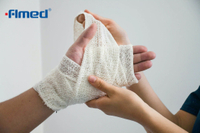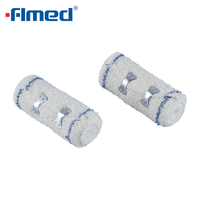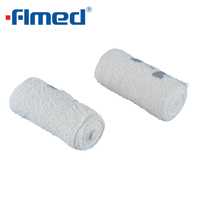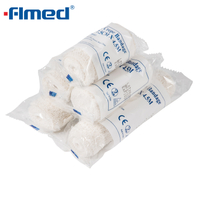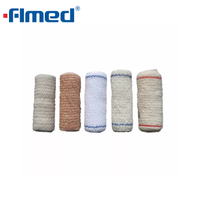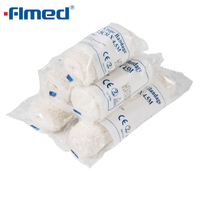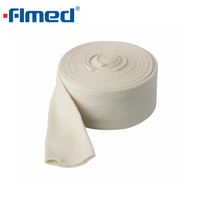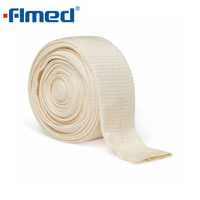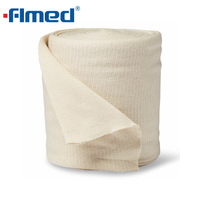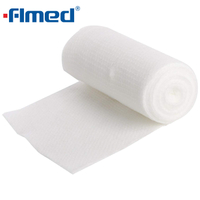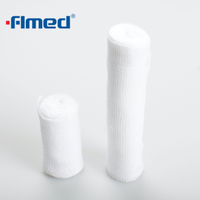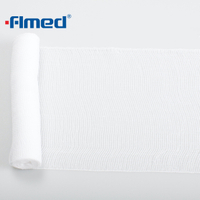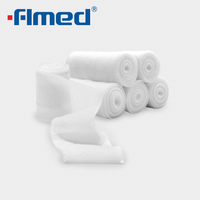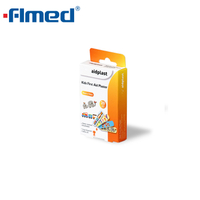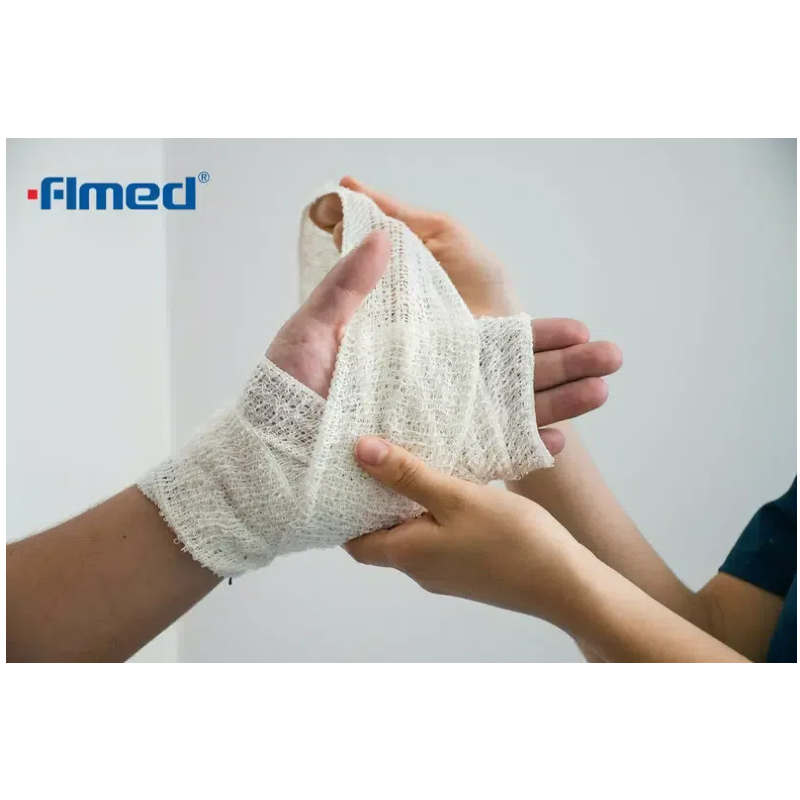
Clinics and retailers need reliable bandages that combine quality, versatility, and cost-effectiveness. At Forlong Medical, we provide a wide range of high-quality Bandage products, including compression bandages designed for both clinical use and retail distribution. Understanding the types, specifications, and procurement considerations for compression bandages can help healthcare facilities maintain effective stock and deliver optimal patient care. This guide will help buyers evaluate options, compare product features, and assemble starter kits that suit small clinics or larger distributors.
Compression Bandages: Types and Clinical Roles
Compression bandages are essential for supporting injured muscles, stabilizing joints, and promoting recovery. They come in various types, each with specific clinical purposes:
Conforming Bandages
Conforming bandages are lightweight and flexible, often used for minor injuries and to secure dressings. Their primary role is to provide gentle support and coverage for cuts, abrasions, or postoperative wounds. These bandages conform easily to irregular body parts such as fingers, toes, or elbows, ensuring a snug fit without restricting movement.
Elastic Bandages
Elastic bandages, including high elastic bandages, are designed to apply controlled pressure to muscles and joints. They are commonly used for sprains, strains, and swelling reduction. High elastic bandages offer greater stretch and recovery, allowing repeated use without losing compression efficiency. Clinics often rely on elastic bandages for managing soft tissue injuries and providing temporary immobilization before definitive treatment.
Cohesive Bandages
Cohesive bandages stick to themselves but not to skin or hair, which makes them ideal for pediatric and sensitive-skin applications. They provide firm compression while minimizing irritation and are often used in sports medicine for securing joint supports, splints, or light padding.
Plaster of Paris (POP) Cast Support
Plaster of Paris bandages are designed to create rigid immobilization for fractures or severe injuries. These bandages are coated with a fine plaster powder that sets quickly when moistened. POP bandages are crucial in orthopedic settings for fracture stabilization, ensuring bones remain aligned during the healing process.
Each type serves a distinct clinical role, making it essential for procurement teams to evaluate the specific needs of their patient population when selecting compression bandages.
Key Specifications Buyers Must Check
When purchasing compression bandages for clinics or retail, attention to technical specifications is critical. Several factors affect both performance and stock management:
Material
Bandage material affects elasticity, comfort, and durability. Cotton-based bandages are breathable and suitable for everyday use, while synthetic blends such as PBT Bandage materials provide enhanced stretch and longevity. Buyers should select materials that balance patient comfort and clinical effectiveness.
Stretch Percentage
The stretch percentage determines the level of compression a bandage can deliver. High elastic bandages typically provide 100–200% stretch, while cohesive bandages have moderate stretch for controlled pressure. Understanding stretch characteristics ensures that the selected bandage achieves the desired therapeutic effect.
Width and Roll Length
Bandage width influences the area covered and suitability for specific body parts. Narrow bandages are ideal for fingers and toes, while wider rolls cover larger areas such as thighs or calves. Roll length affects inventory planning and cost per unit. Clinics may opt for multiple roll lengths to balance convenience and storage efficiency.
Thickness and Density
Thicker bandages may provide higher compression but reduce flexibility, while thinner bandages allow movement but may require additional layers. Density impacts durability and the number of layers needed for effective support.
Evaluating these specifications helps buyers make informed procurement decisions and ensures compatibility with clinical needs and patient comfort.
![Bandage Bandage]()
Packaging, Shelf-Life, and Regulatory Considerations for Export
For clinics and distributors sourcing compression bandages internationally, packaging and regulatory compliance are critical:
Packaging
Proper packaging preserves product integrity and simplifies storage. Bandages are often individually wrapped or packed in boxes with clear labels specifying size, material, and intended use. Compact, durable packaging reduces transportation damage and improves shelf presentation.
Shelf-Life
Understanding shelf-life is vital for inventory rotation. Most compression bandages maintain effectiveness for several years if stored properly, but elastic properties may degrade over time. Buyers should request recommended storage conditions from suppliers.
Regulatory Compliance
Exporting medical bandages requires adherence to international standards. Buyers should request test reports, CE marking, ISO certifications, or equivalent quality documentation. Proper labeling with batch numbers, expiry dates, and usage instructions ensures compliance and reduces liability.
By considering packaging, shelf-life, and regulatory requirements, clinics and distributors can ensure safe and reliable product supply.
Pricing and MOQ Strategy for Small Clinics vs Large Distributors
Procurement strategies differ based on organizational scale:
Small Clinics
Small clinics may benefit from ordering a smaller quantity of each bandage type to maintain variety while controlling costs. Trial SKUs and sample packs allow evaluation of patient acceptance and product performance before committing to bulk orders.
Large Distributors
Large distributors can leverage economies of scale by ordering larger Minimum Order Quantities (MOQs) and negotiating favorable pricing. Bulk orders reduce unit costs, and standardized stock management simplifies logistics. Private-label options may also be considered to enhance brand visibility in retail channels.
Balancing price, MOQ, and variety helps ensure clinics and distributors maintain optimal stock without overcommitting capital.
Assembling a Starter Kit for a Small Clinic
For small clinics, a starter kit with essential bandages ensures readiness for a wide range of injuries and patient needs. A recommended kit might include:
Crepe Bandage: Lightweight, versatile, suitable for sprains and light support.
High Elastic Bandage: Provides strong compression for swelling reduction and joint support.
PBT Bandage: Durable and flexible for sports injuries and repeated use.
Cohesive Bandage: Self-adhering for secure, comfortable compression.
Plaster of Paris Padding: Essential for fracture stabilization and immobilization.
This selection covers minor injuries, moderate strains, and serious orthopedic cases, providing a comprehensive solution for patient care.
Comparing Bandage Types for Performance and Cost
Selecting the right compression bandage also involves balancing performance with cost-effectiveness:
Crepe Bandages are economical, breathable, and suitable for light compression. Ideal for routine wound care and minor sprains.
High Elastic Bandages offer stronger support and are reusable for multiple patients. Suitable for moderate to severe swelling and joint injuries.
PBT Bandages combine elasticity and durability, making them ideal for sports medicine applications and repetitive use.
Cohesive Bandages reduce the risk of skin irritation and are perfect for sensitive patients or pediatric care.
Plaster of Paris Bandages provide unmatched rigidity for fracture support, although they require more training to apply correctly.
Understanding these distinctions allows clinics and retailers to optimize procurement budgets while ensuring clinical effectiveness.
Procurement Tips for Clinics and Retailers
When sourcing compression bandages, consider these practical tips:
Sample Ordering: Request samples to test quality, elasticity, and patient comfort.
SKU Selection: Choose a mix of widths, roll lengths, and material types to meet diverse clinical needs.
Supplier Evaluation: Verify certifications, quality control practices, and delivery reliability.
Inventory Planning: Maintain a balance between popular items and specialty bandages to avoid stockouts.
Private Labeling: For distributors, custom branding can enhance market visibility without compromising quality.
Implementing these strategies helps facilities maintain efficient stock management and high patient satisfaction.
Conclusion
Selecting the right compression bandages is critical for clinics and retail outlets aiming to deliver effective patient care while managing costs. At Forlong Medical, we provide a comprehensive range of Bandage products, including crepe bandages, high elastic bandages, PBT bandages, cohesive bandages, and Plaster of Paris bandages. Our products meet international quality standards and are designed to support a variety of clinical applications, from minor strains to orthopedic immobilization. Buyers can rely on our expertise to choose suitable bandages, assemble starter kits, and maintain optimal inventory levels. To explore our full range of compression bandages and request samples, contact us today and let our team help you find the right solutions for your clinic or retail business.

 English
English
